Disclosure: This page may contain affiliate links, meaning we receive a commission if you decide to make a purchase through our links, but this is at no additional cost to you. Please read our disclosure and privacy statement for more info.
Staring at the ceiling, willing yourself to sleep, but your mind is on overdrive? We’ve all been there. That nagging feeling of needing sleep as your next shift is just hours away, but being wide awake can be incredibly frustrating. But fear not, fellow hopefully temporary insomniacs! This post is your secret weapon to unlock the elusive land of sleep, even when your energy levels are sky-high.
Forget counting sheep. We’re diving into science-backed techniques and practical tips that can help you drift off fast whether you’re stressed, wired, or just plain restless. So ditch the frustration, grab your PJs, and get ready to discover the magic of instant sleep as we uncover 16 epic sleep tips to help you fall asleep quickly – even when it feels impossible.
1. Wear Blue Light Blocking Glasses Before Bed
Who ‘winds down’ after a busy late/night shift by looking at their phone, or laptop computers or watching the next episode of their Netflix series? Msot of us do. I often don’t want to talk for a while once I get home from a busy 2nd shift in the ER and instead turn to mind-numbing but thoroughly enjoyable TV shows like Sex and the City re-runs.
So, what’s the problem? Blue light my friends…
We speak about this a lot because research has shown that it keeps our sleep hormones such as melatonin from doing their thing. (source) The easiest way we have controlled this particularly hazardous stream of light (at night) is to wear Swanwick Sleep – ‘Swannies‘. (These are the orange-lensed glasses you may have made fun of before).
They block out 99% of the blue light which far exceeds any other blue light-blocking glasses we could find on Amazon.
Blue light filtering glasses have become a key part of our pre-sleep ritual. Ninety minutes before hitting the hay, regardless of our work schedule, we slip them on. Not only do they help us fall asleep quicker and stay asleep longer, but the immediate reduction in screen glare provides welcome relief for our eyes.
We highly recommend checking out the Swanwick Sleep website here and getting your very own pair of Swannies. I prefer the ones which don’t have separate nose pieces like the classic night swannies as I find them a little more comfortable when in bed. If I need to slide them onto of my head for a moment they don’t get stuck in my hair.
Or shift work tools page has a lot more information about blue light and some great videos explaining what blue light blockers do in more detail.
If you need a visual, here is what they look like. We have a couple of different pairs we alternate between.



Swanwick Sleep, also has a yellow almost clear lens you will find online. These are more “computer glasses” that won’t help you sleep but will take away some of the glare from the screen by limiting the blue light. I did a video comparison which you can watch below.
If you’re keen to explore the day glasses that I happen to be wearing right now writing this, you can explore the Swanwick website here as we recommend these glasses the most.
Use “THEOTHERSHIFT” for a discount come checkout time
2. Listen to Soft or “Colored” Tunes
Tossing and turning while your mind races at 3 AM? Don’t underestimate the power of sound!
Both music and white noise tap into our brain’s sleep-inducing mechanisms, even when we’re not physically drained. According to the Sleep Foundation, music works its magic by lowering stress hormones and releasing calming dopamine, creating a peaceful mental space. There is a reason they use binaural beats in day spas…
Calming melodies and slow tempos guide your brainwave activity towards sleep, while upbeat music can distract from intrusive thoughts, allowing your mind to unwind.
White noise, on the other hand, acts as a sound barrier, masking disruptive environmental noises and preventing them from jolting you awake. Its consistent, neutral sound provides a comforting backdrop, similar to the womb’s constant hum, fostering a sense of security and relaxation.
Remember, not all sounds are created equal. Experiment with different genres, tempos, and white noise variations to find your personal sleep soundtrack. So, the next time your brain won’t shut down, try turning up the volume on slumber – you might be surprised at how quickly the Sandman arrives!
Here is a link to one of my favourite playlist on spotify. Though don’t be afraid to try brown or green noise too!
We recently published a post about the most relaxing tunes to help you sleep. It has a bunch of video and playlist examples for you to try out. See our sleep music post here.
3. Put on Your Yoga Tights Before Bed
Yoga has been proven to decrease stress and tension by encouraging the practice of calm and deep breathing patterns.
My personal favorite way to practice yoga on the cheap is streaming it via YouTube to my TV via my Chromcast I bought on Amazon (ad). One of these days I’ll buy a smart TV but for now this works just fine.
My go-to channel is ‘Yoga with Adrienne’ and it’s what I recommend. She’s beautifully calm, educational and easy to follow.
Here is a great relaxing video to help you wind down and feel tired before bed.
If you want some specific yoga positions here is a list you could try;
- Child’s Pose (Balasana)
- Cat-Cow Pose (Marjaryasana-Bitilasana)
- Thread the Needle Pose (Paschimottanasana)
- Legs-Up-the-Wall Pose (Viparita Karani)
- Supported Bridge Pose (Setu Bandha Sarvangasana)
- Reclining Hero Pose (Supta Virasana)
- Corpse Pose (Savasana)
- Listen to your body and modify any poses as needed. Don’t push yourself into pain.
- Create a relaxing atmosphere before you begin your practice. Dim the lights, turn off electronic devices, and play calming music.
- Focus on your breath and release any tension you hold in your body.
- Be patient and consistent. It may take some time to see the benefits of yoga for sleep.
Our final exercise tip is, if you don’t experience negative effects with vigorous exercise shortly before bed, this could be the perfect solution to sleep as you’ll have tired yourself out. However, for me, I found it has the opposite effect. I talk a lot about exercising before bed and weather it’s a good idea here. Sleep or Workout? What Should I Do After Night Shift? I made a video about it too which you can watch below.
4. Use Lavender and Aromatherapy
The calming scent of lavender can be your key to slumberland. Studies, such as this one and this one, suggest it interacts with the nervous system, promoting relaxation and reducing anxiety, both of which can hinder sleep. According to Dr. Axe, It’s a powerful essential oil that has been shown to improve symptoms of PTSD, support brain function, reduce stress and help us sleep.
Incorporate aromatherapy into your bedtime routine:
- Diffuse: Add a few drops of lavender essential oil to a diffuser, filling your room with its soothing aroma.
- Spritz: Create a DIY pillow mist by combining water, witch hazel, and a few drops of lavender oil in a spray bottle. Spritz lightly on your pillow before sleep.
- Soak: Draw a warm bath with Epsom salts and a few drops of lavender oil. Immerse yourself and let the scent and warmth melt away stress.
- Snuggle: Place a sachet filled with dried lavender near your pillow, allowing its gentle fragrance to lull you into sleep.
Remember, aromatherapy works best alongside healthy sleep habits like a consistent sleep schedule, a relaxing bedtime routine, and a sleep-conducive environment. Sweet dreams!
Related post – Embracing Lavender is the Key to Sleep for Shift Workers
This lavender oil pictured is very popular on Amazon and well worth a sniff. We use it in our diffuser pictured but it will work perfectly well in the suggestions we gave above. Here is a link to another popular diffuser via Amazon. (ad)
5. Write Down What’s Stressing You Out
Grab a pen and paper, and turn those swirling anxieties into tangible tasks. By physically writing down your stressors, you shift them from your restless mind to an external list, freeing yourself from the burden of remembering.
Unlike the blue light of your phone, pen and paper won’t disrupt your sleep hormones. It’s like transferring all those “make tomorrow’s problem” items off your mental to-do list, clearing space for calm and slumber. This simple act can work wonders, especially for those whose professions where you are left overanalyzing your most recent shift.
So, instead of wishing your way to sleep, try writing your way to it! This may sound corny, but sweet dreams may be just a pen stroke away.
People often say, just ‘stop thinking about it’ when giving sleeping advice but that doesn’t work for me. But this does.
If you want to read about why writing works, I found this research article really interesting.
This basic lined notebook is a great start to get your thoughts on paper. If you’re more of an app person, I like the Resistance Project App and their journal Here is a link to it.
We also write a post about our favorite shift work apps you can explore here. These are the ones we use and love most days.
6. Dip Your Face in Freezing Cold Water
This might sound like “woo-woo” territory, but hear me out! This reflex, triggered by plunging your face in cold water for 30 seconds, has real science backing it. Here’s the magic:
- Heart Rate Slowdown: Cold water triggers a decrease in heart rate, promoting a calming effect.
- Blood Flow Shift: Circulation redirects towards your core, mimicking the “hibernation mode” of diving mammals, leaving your limbs cool and relaxed.
- Natural Tranquilizer: This shift activates your parasympathetic nervous system, the “rest and digest” part, promoting a sense of peace.
Crazy, right? But don’t underestimate the power of a simple splash! By tricking your body into mimicking a calming response, you can silence the mental chatter and drift off to dreamland. It’s a quick, non-invasive, and (dare I say?) refreshing way to quiet your inner chatterbox and unlock the door to deep sleep.
Remember: Even with a busy mind, this technique can be a powerful tool. Give it a try, and sweet dreams await!

7. Get the Temperature Right
Aim for a bedroom oasis between 60-75°F (15-23°C). Why? As you drift off, your body naturally cools down, reaching its peak dip around 4am. Mimicking this natural rhythm by adjusting your thermostat helps you settle in and stay asleep. (source)
Sure, it might feel a tad chilly initially, but trust me, waking up refreshed beats tossing and turning in a sauna any day. To reach this sleep-friendly temperature, unleash your cooling arsenal: open a window, crank up the fan, or even blast the AC (if you’re lucky enough to have one).
Speaking of heat-induced havoc, I’m not alone in experiencing wild, wake-me-up dreams on sweltering nights, right? If you’re nodding your head (and battling nighttime sweats), head over to our picks for affordable sleep aids that can make a huge difference in your slumber quality. Sweet dreams (and cooler temperatures) await!
Related post: 9 Shift Work Best Practices You’re Probably Not Doing
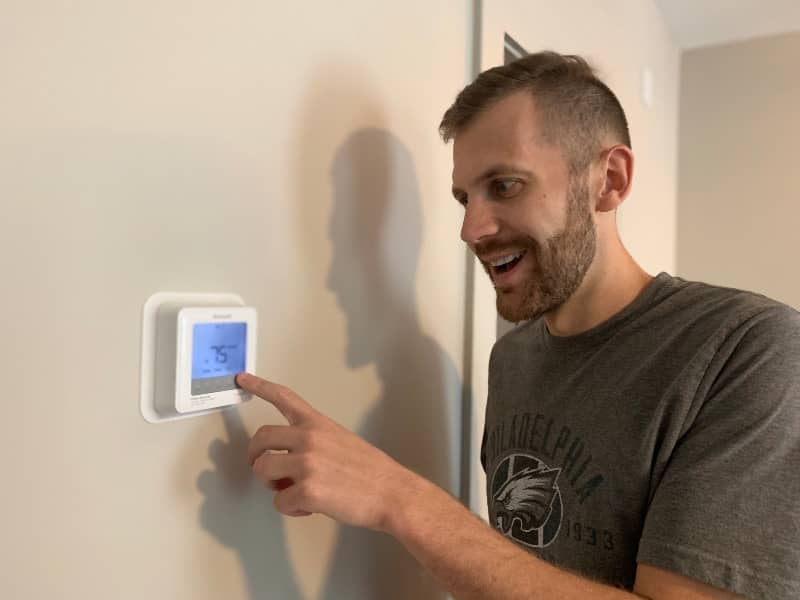
8. Take a Warm Bath or Shower
My hands and entire body get exposed to some pretty gross stuff on an average shift at the hospital. I’ll spare you the details by simply saying, having a warm bath/shower is exactly what I need as soon as I walk in the door.
But having a warm shower/bath is actually much more than just personal hygiene.
Body temperature plays an important part in regulating your circadian rhythm (body clock), which tells the body when to feel sleepy or alert. Did you know your body is naturally cooler while you sleep? Night shift chills are REAL after all!
Having a warm shower or bath will momentarily spike your body temperature. However, once you turn off the tap and dry yourself you will naturally cool, preparing your body for sleep.
If you like an excessively hot shower, you may need up to 90 minutes to cool down to the ideal sleep temperature.
Why not try showering in the dark or with a candle after your next shift? Even Richard Branson uses baths to help him relax and get some sleep even when he’s not tired!
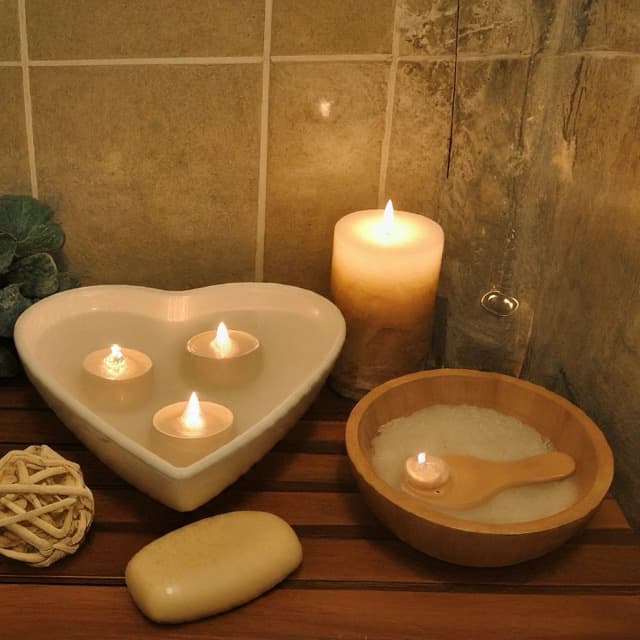
9. Listen to an Adult Story Podcast
For weary minds struggling to find slumber, adult story podcasts might be an unexpected ally. While the calming power of bedtime stories isn’t exclusive to children, research suggests specific elements in these podcasts effectively promote sleep. They help by:
- Distraction: Captivating stories divert attention from worries, reducing pre-sleep anxiety. Relaxation: Soothing narration and gentle pacing activate the parasympathetic nervous system, promoting calmness. (source)
- Familiarity: Classic tales or familiar genres evoke comfort and nostalgia, easing the transition to sleep.
- Rhythmic speech: Slow, measured speaking patterns trigger relaxation and sleepiness.
- Calming sounds: Binaural beats or nature sounds incorporated in some podcasts can further enhance sleep quality. (source)
It’s important to note that individual preferences vary. While some find podcasts helpful, others might be stimulated by the narrative, hindering sleep. Experimenting with different podcasts and finding what works best for you is key.
A few friends of my have found that the app Calm is an absolute winner.
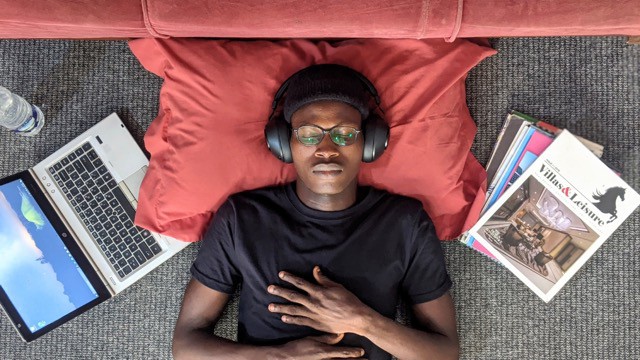
10. Drink Human Tonik During the Day
Though this tip won’t help you if you’re reading this in the middle of the night, can I suggest you start this tomorrow? Drink Human Tonik. They offer a range of superfood and adaptogen powder supplements designed to support complete body and brain health. They emphasize transparency with full ingredient dosages and 3rd party testing, claiming their products are made with natural, whole-food ingredients and free from artificial colors, flavors, and sweeteners.
Their website, which is run but our good friend Adam, offers information about each product, its benefits, and the science behind the ingredients. They target customers who value evidence-based products and prioritize natural solutions for health and well-being.
We have been drinking these for years and notice a considerable difference when we stop – such as if we run out before we order more. How will this help you in the sleeping department? You won’t have to battle cold, headaches and anything niggly that is keeping you awake such as a runny nose!
They have four impressive products to choose from. Here are links to them if you’re keen to explore.
I’ve posted a review of SuperGreen TONIK below too if you’d prefer to watch than read.
11. Be Aware of When You Enjoy Caffeine
We shift workers know the allure of caffeine like nobody’s business. From sugary sodas and chocolate bars to creamy lattes and energy drinks, it’s our constant companion, the fuel that keeps us going when the world sleeps. But here’s the harsh reality: that afternoon pick-me-up can turn into a sleep-stealing monster, leaving you tossing and turning at 3 am, desperately counting sheep (or maybe coffee beans).
It’s time to break free from the caffeine rollercoaster and embrace the world of sleep-friendly beverages! Trust me, your taste buds will adjust, and you’ll find yourself craving the calming warmth and natural goodness of herbal teas and other caffeine-free options.
Remember, caffeine doesn’t just lurk in your morning coffee. It hides in unexpected places, sabotaging your sleep hours later. So, let’s expand our caffeine awareness beyond the latte:
Say goodbye to the following 6 hours before you intend to go to sleep (if sleep is an issue for you).
- Sugary sodas: Replace that cola craving with sparkling water infused with fruit slices or herbs.
- Chocolate bars: Opt for naturally caffeine-free treats like dates, nuts, or fruit leather.
- Energy drinks: These are caffeine bombs! Switch to sparkling water with a squeeze of citrus for a refreshing boost.
- Black and green teas: While offering some health benefits, they contain caffeine. Explore herbal teas like chamomile, peppermint, or lavender for relaxation.
- Decaf coffee and tea: Even decaf has trace amounts of caffeine, enough to disrupt sleep for some.
Embrace the calming alternatives:
- Herbal teas: As mentioned before, they offer a variety of flavors and benefits, promoting relaxation and digestion. Peppermint tea in particular aids in post-meal digestion.
- Warm water with lemon: This simple drink aids digestion and provides electrolytes.
- Fruit-infused water: Add slices of cucumber, orange, or berries for a refreshing and flavorful hydration boost.
- Golden milk: This turmeric-infused drink has anti-inflammatory properties and promotes sleep.
By ditching the pre-sleep caffeine and embracing these healthier alternatives, you’ll be saying goodbye to restless nights and hello to a well-rested you, even on the most demanding shifts. So, ditch the jitters, brew your calming beverage, and join me on this sleep-friendly journey towards a happier, healthier shift worker life!
Here are my few favorite teas on Amazon;
- Celestial Seasonings Herbal Tea, Sleepytime
- Twinings Pure Peppermint Individually Wrapped Tea Bags
- FGO Organic Chamomile Tea, Eco-Conscious Tea Bags

12. Read a Book
Ditch the melatonin and pick up a book instead! Yes, you read that right. Curling up with a good read isn’t just a leisure activity; it’s a surprisingly effective sleep hack. Here’s why:
Reading acts as a gentle mental massage. It calms your racing mind, replacing anxious thoughts with engaging narratives. Think of it as trading your internal monologue for a soothing bedtime story. By focusing on the plot, characters, and descriptions, you naturally disconnect from everyday worries and anxieties, easing your way into relaxation.
Unlike the blue light emitted from screens, reading with physical books promotes sleep-inducing hormones. The soft, warm glow of paper doesn’t disrupt your natural sleep-wake cycle like the harsh glare of phones and tablets. Plus, the physical act of turning pages adds a rhythmic element that further lulls you into a peaceful state.
Reading helps you de-stress and unwind and tt transports you to different worlds, offering a mental escape from daily pressures.
So, before reaching for that sleep medication, give reading a try! It’s a natural, affordable, and enjoyable way to drift off to dreamland quicker. Grab your favorite book, dim the lights, and get ready to unlock the power of bedtime stories for adults.
Don’t forget your Swannies to block out the blue light or use a little book light to lessen the harsh light rays.
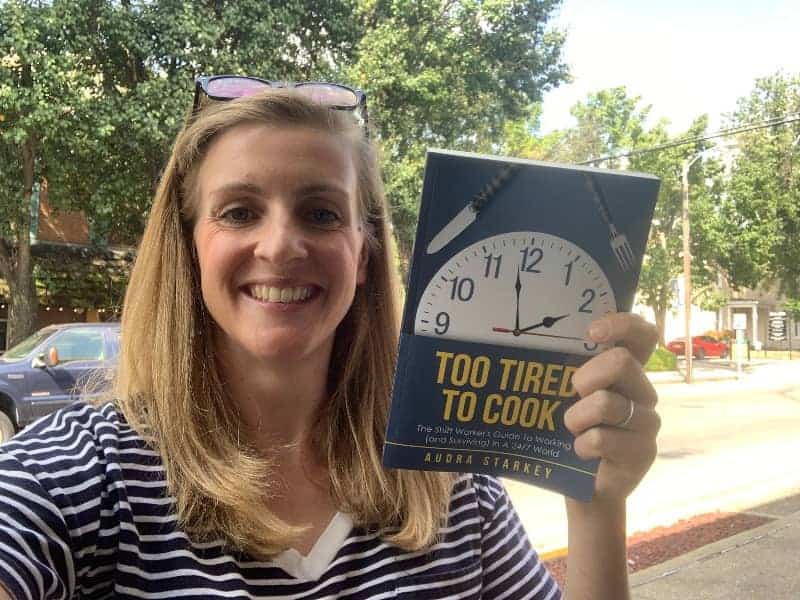
13. Turn Off/Close Your Screen
We’ve established the magic of reading for a restful night, but remember, the bedtime ritual starts much earlier! The culprit we face: the mesmerizing blue light emanating from our beloved devices. This light disrupts our natural sleep-wake cycle, tricking our bodies into thinking it’s still daytime. So, ditch the digital distractions and embrace screen-free serenity:
- Set a Sunset for Screens: One hour before hitting the hay, power down your devices. It’s not just about emails and social media; even reading ebooks emits the sleep-sabotaging blue light. Opt for a paper book under a warm lamp instead.
- Charge Elsewhere: Resist the urge to keep your phone by your bedside. Charge it in another room and utilize an old-fashioned alarm clock (remember those?). This eliminates the temptation to scroll “just for a bit,” and the charging light won’t disrupt your slumber.
- Night Shift and Don’t Disturb: Helpers, Not Enablers: While these features can slightly reduce blue light and silence notifications, they shouldn’t be an excuse to extend screen time. Use them strategically—activate Night Shift after sunset and enable Do Not Disturb to prioritize sleep over late-night notifications.
Remember, the goal is to truly disconnect and unwind. These tips pave the way for a deeper, more restorative sleep, allowing you to wake up feeling refreshed and ready to conquer the day (without needing that extra cup of coffee!).
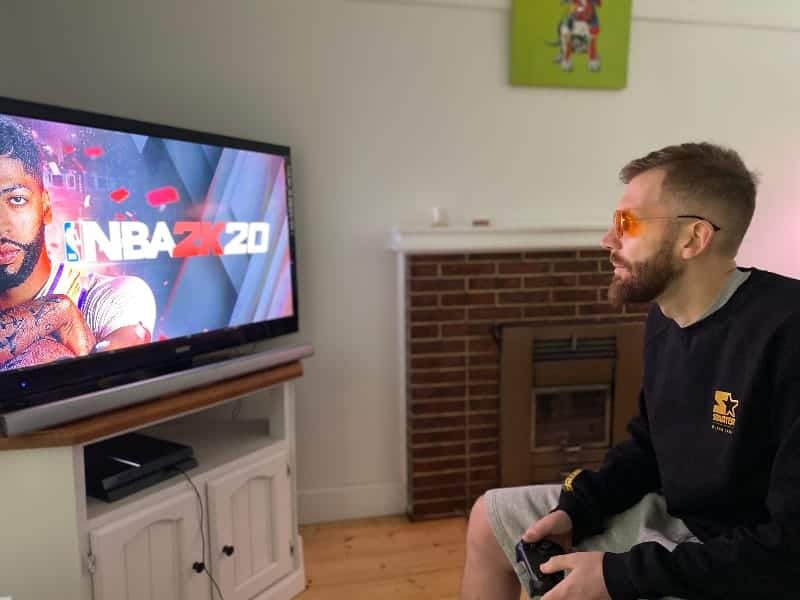
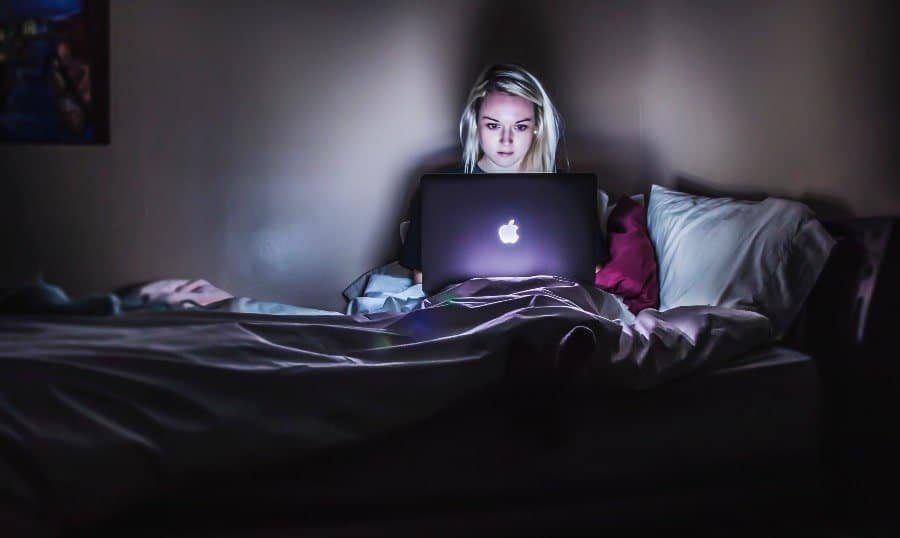
14. Control Your Breathing
Mastering a simple breathing technique can unlock the door to a slumber haven. I know, I used to scoff at it too, but trust me, this isn’t your grandma’s boring deep breaths. This is about unlocking a powerful relaxation tool that helps even when you’re not feeling tired.
Here’s how:
1. Countdown Chill: This method keeps your mind occupied and calms your racing thoughts. Get comfy in bed, close your eyes, and start counting backwards from 100. But here’s the twist: between each number, take two deep, slow breaths in and out. Imagine your worries gently floating away with each exhale. Confession: I rarely make it past 85 before drifting off!
2. Exhale & Count: This technique focuses on slowing your breath and promoting relaxation. Find a comfortable position, close your eyes, and start counting “one” silently to yourself as you slowly exhale. Repeat with “two” on the next exhale, and so on, reaching “five” at most. Then, start over at “one” with your next exhale. Don’t push yourself beyond five counts; focus on the rhythm and calmness of your breath. (source)
3. “Box breathing”: inhale for four seconds, hold for four, exhale for four, hold for four, and repeat. It’s like counting sheep, but way more zen!
4. 4-7-8 method: Inhale deeply through your nose for four seconds, hold your breath for seven seconds, and then exhale completely through your mouth for eight seconds. Repeat this cycle several times, focusing on the sensation of the breath and letting go of any tension with each exhale. (source)
Remember, consistency is key! Practice these techniques regularly, even when you’re not struggling to sleep. Soon, taking a few calming breaths will become your go-to sleep superpower. Sweet dreams!
[VIDEO] – If guided meditation is totally new to you, this YouTube video is very helpful. Skip to about the 57 seconds mark to begin. Try to relax by concentrating on their voice and your breathing.
15. Wear Socks and/or Gloves
This one is a little controversial and may not work for you but it’s worth noting in case it is.
The theory here is, by heating your cold feet tells the brain that it’s bedtime through improved circulation and warmth. (source) However, in some cases, wearing restrictive clothing to bed can even be detrimental, especially for people with certain health conditions. I know in the past I have worn bed socks by BOODY particularly when it’s cold and it’s really helped me.
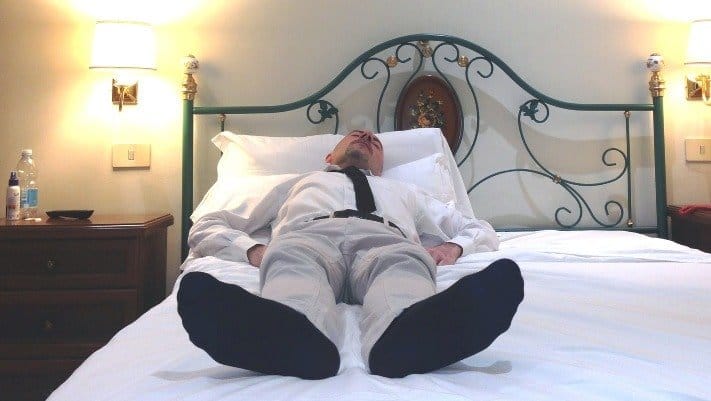
Related post: Can’t Sleep After Night Shift? 13 Weird Tips That Actually Work
16. Take Melatonin or Other Sleep Supplements
You can see from this extensive list that medications are NOT the only option to help you fall to sleep quickly even when you’re not tired.
In the small handful of times, we have used Melatonin, we did fall to sleep, but awoke feeling terrible!
If you absolutely need to take Melatonin then go for it, BUT try all these solutions first. Our tip here is if you still have 4+ hours of sleeping time before you need to get up, but you can’t sleep, then take it. Any less, resist. Otherwise, you’ll wake feeling lethargic and groggy.
Natrol Melatonin works well and is very popular on Amazon if you need to stick a spare bottle in the medicine cabinet. Just be aware, I personally only need either the 3mg or 5mg, not the 10mg. It’s too much for me.
If you are on the fence about Melatonin and other sleep aids – check out these two posts we wrote shift working medications.
- Insomnia and Shift Work Sleep Disorder Medication Review
- My Top Tip for Taking Melatonin on Night Shift: Plus 10 More
CBD Products
If you’re a shift worker struggling to catch those precious Zzz’s, consider trying Naturecan’s range of CBD products. Made with natural, high-quality ingredients, CBD may help reduce stress and anxiety, promoting a sense of calm that can lull you into a restful sleep.
Naturecan offers a variety of CBD options, from oils and gummies to capsules, so you can find the perfect solution for your needs. Reclaim your sleep and improve your overall well-being – visit Naturecan today and experience the difference CBD can make.
These are the products we are currently trying. The balms are great!! Check out Naturecan here.
Bonus: Stick to a Routine
We often bang on about the importance of a sleep routine.
Why? Your body needs to know when it’s time to ‘wind down’ so it can start preparing your body and mind. We are habitual creatures and creating a systematic routine will improve sleep.
For most shift workers, having a sleep routine can be almost impossible, especially those on a rotating roster.
But following the same routine before bed, regardless of the time of day will help. Show some self-love and give your brain the heads up that sleep is coming…
Related post: 8 Useful Hacks for Surviving Night Shift With No Sleep
Sleep Routine Tip…
Start to make sure that in the 1-2 hours before bed, most things looks the same. For example, the time you go to bed, having a bath, smelling lavender, listening to sleep music, stretching and/or reading a book.
This video helps explain what I mean.
Next…
- Night shift health: Is Night Shift Bad for You? 11 Truths Uncovered
- Burnout: Shift Work Burnout: Causes, Red Flags and How to Beat It
- Staying fit: How to Stay Fit While Working Nights: 12 Sneaky Tips
- Night shift eating: Conquer Your Night Shift Cravings: A Clear Hourly Meal Plan
Conquer Sleepless Nights: Your Guide to Peaceful Slumber, Even When Wired
Struggling to drift off even when you’re not tired? You’re not alone! This article explored a toolkit of powerful strategies to help you achieve restful sleep, even if your mind or body feels energized. From calming bedtime rituals to breathwork and mindful techniques, we’ve unpacked simple, effective methods to soothe your mind and body into slumber.
Did you discover a new “treasure” to add to your sleep routine? Share your experience or ask any lingering questions in the comments below! We’re here to support you on your journey to deeper, more restorative sleep.
P.s if all of that seems too hard and you want to try something a little different, check THIS out. Instant access to the Six Steps to Sleep program which I’m sure will work just as well for you as it did others in the reviews.
Cheers,

Disclosure: This page may contain affiliate links, meaning we receive a commission if you decide to make a purchase through our links, but this is at no additional cost to you. Please read our disclosure and privacy statement for more info.
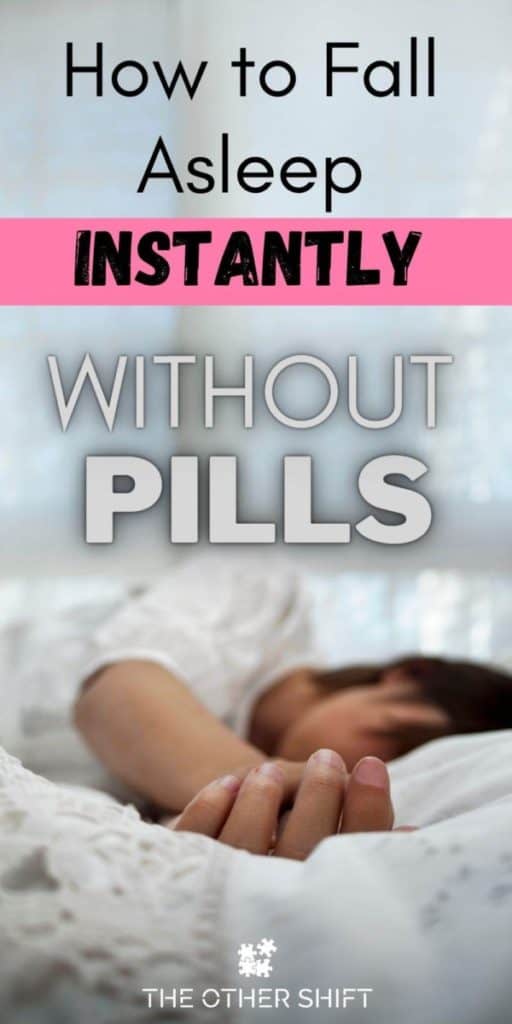
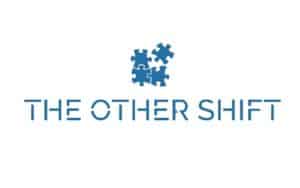

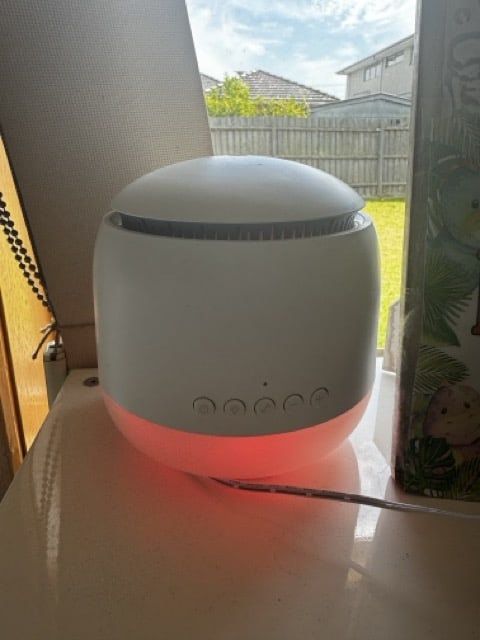

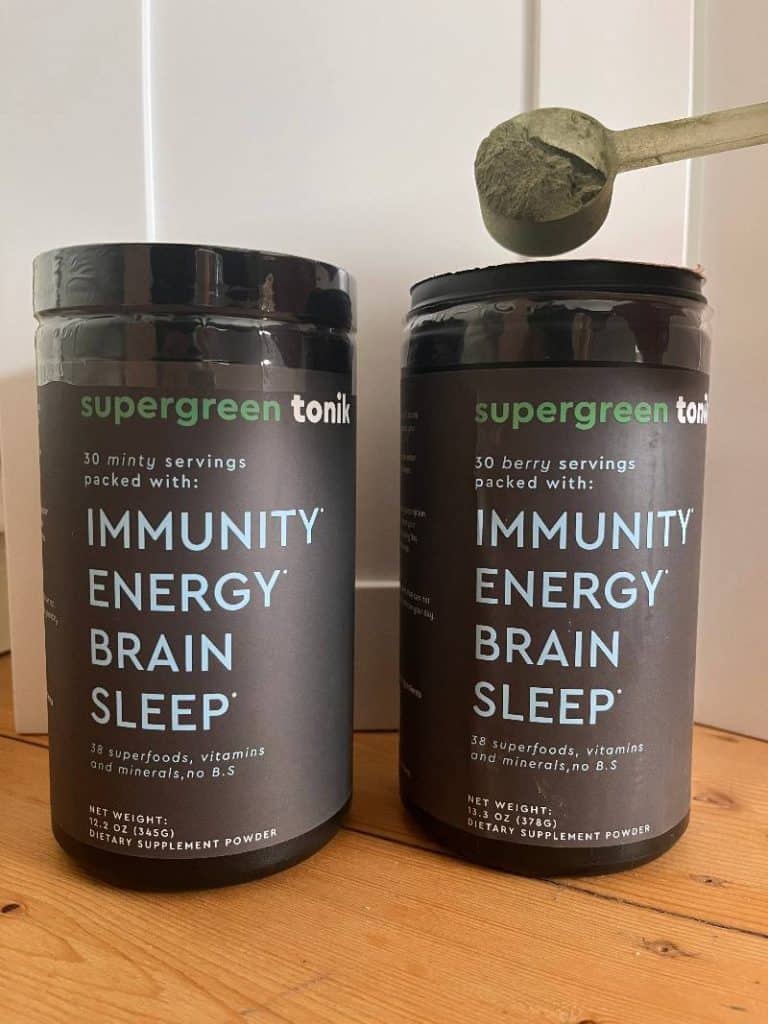
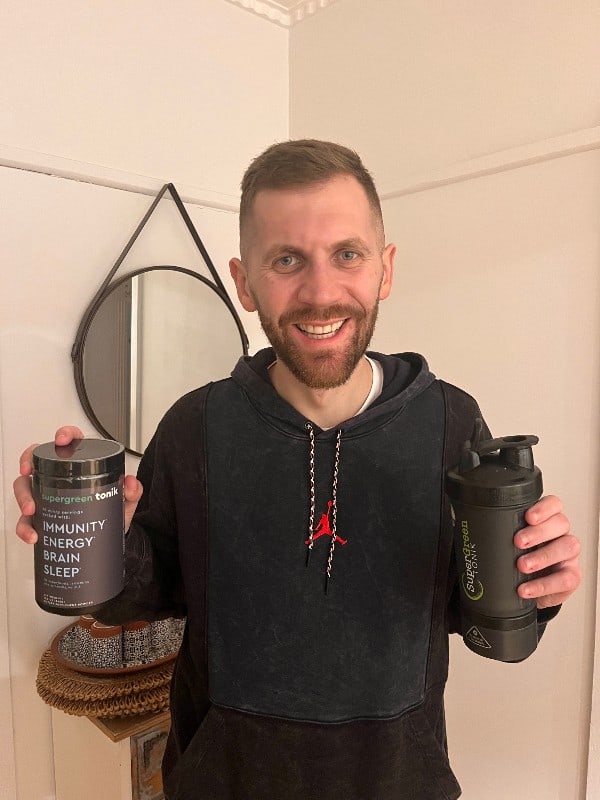

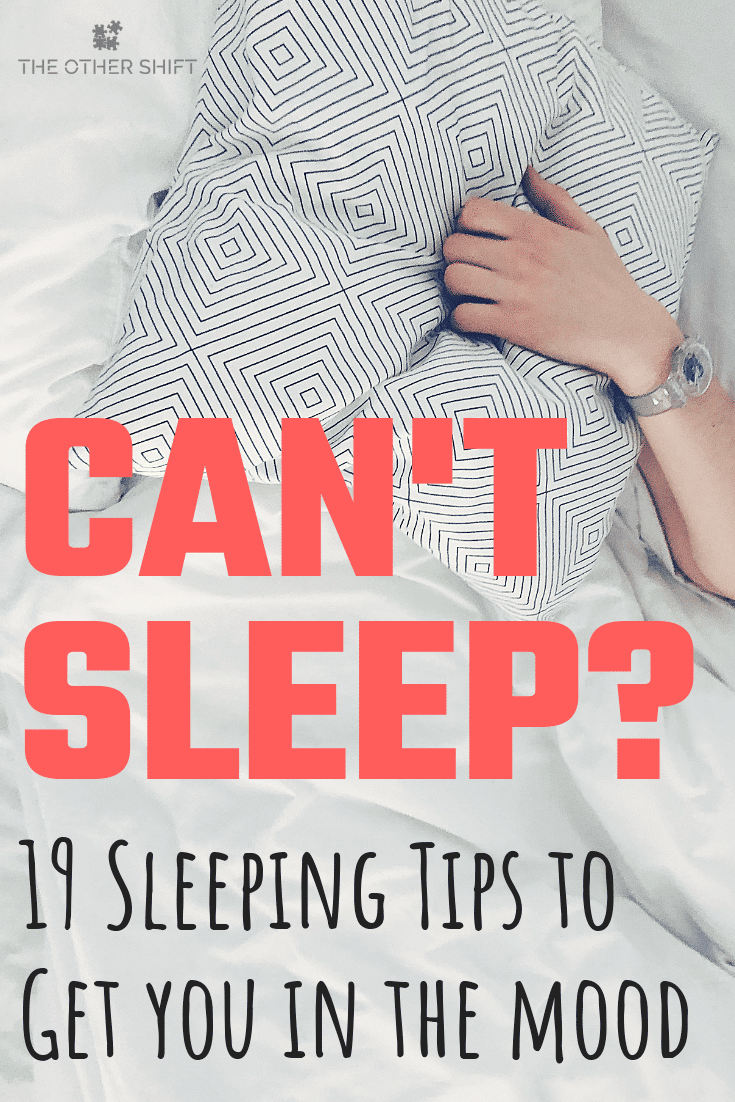
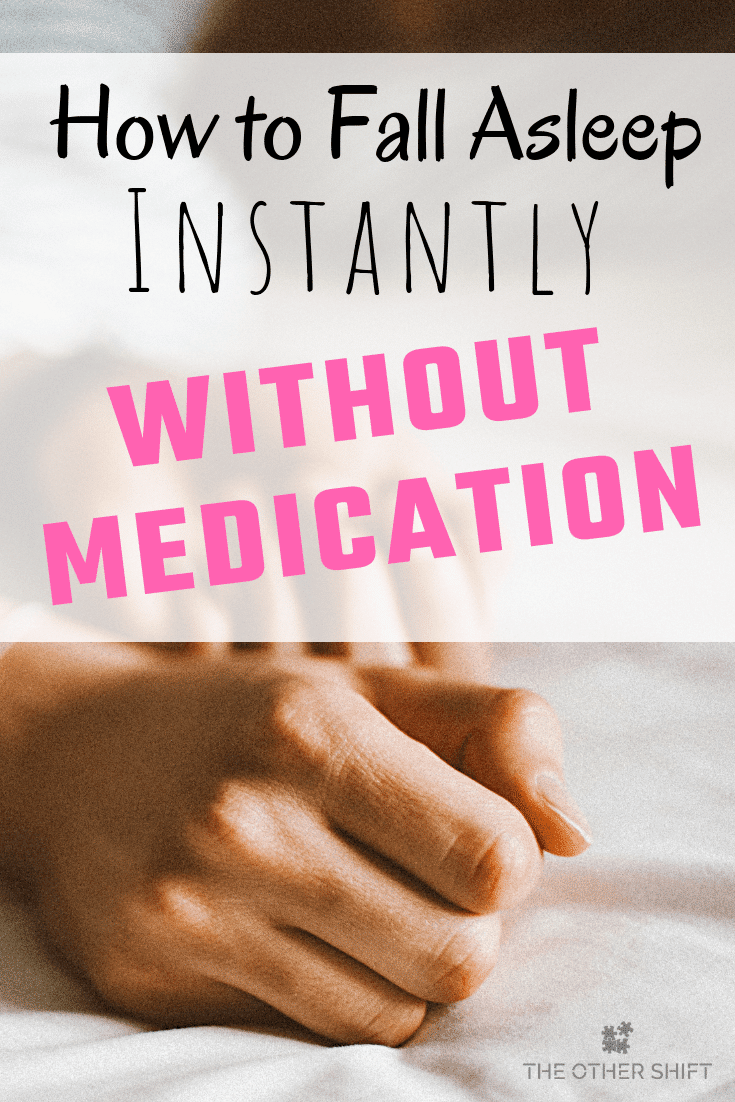
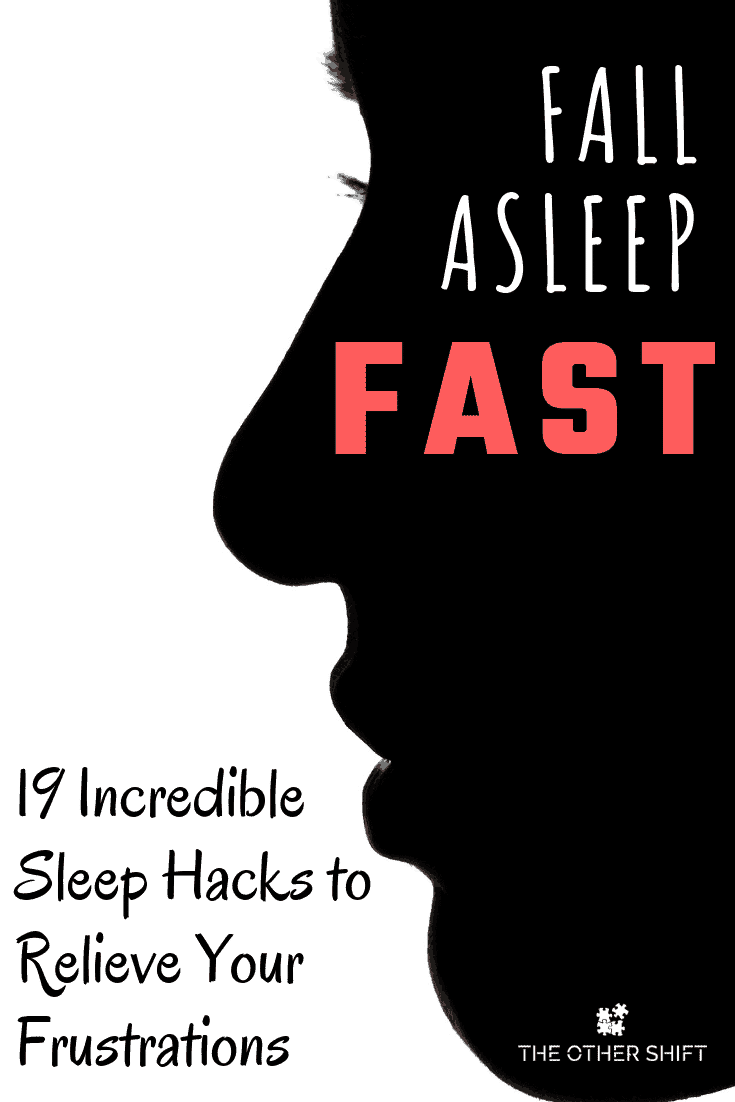

It is very easy to go wrong while brewing green tea. It needs to be brewed at the right temperature, for the right amount of time. For that perfect cup of tea, the optimal temperature is 80 degree Celsius. Anything over this temperature and you risk your tea turning bitter. Green tea has a lot of elements in it that contribute to its complex flavor.
Jong,
We appreciate the kind advice to our readers. Thank you for sharing!
When you brew green tea, excessive heat or over-steeping will result in a bitter, tannin-rich tea. An instant digital probe thermometer and a simple kitchen timer are valuable tools when you’re brewing tea!
Thanks for the tip Julio!